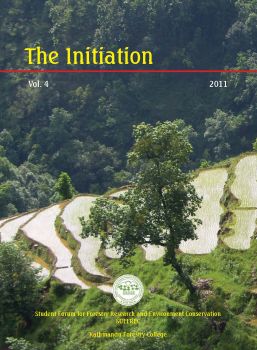Tourism: Boon for Forest Conservation, Livelihood, and Community Development in Ghandruk VDC, Western Nepal
DOI:
https://doi.org/10.3126/init.v4i0.5535Keywords:
Conservation, Sustainable, development, Tourism, Ghandruk, NepalAbstract
This study investigates the socio-economic impact of tourism in two wards of Ghandruk VDC, western Nepal. The analyses are based on (i) primary data collected through household surveys using a random sample of 46 respondents and (ii) published and un-published secondary data, office records, informal and formal interviews and direct observation were the other sources of information. The results show that in Ghandruk both forest and tourism contribute to increase livelihood and sustainable development of the region. This is due to the good management practices of Ann apurna Conservation Area project and other local organizations. The community forest income is more important for the poor people and has a strong equalizing effect on local income distribution. Further more, alternative energy technologies should be promoted in future conservation programs. Sustainable tourism is able to enhance nature conservation by opening up new opportunities. The study suggests that there is a trade-off between economic benefits and environmental and social-cultural costs, which requires a good balance to implement the concept of ecotourism, which boons for forest conservation, livelihood, and community development.
DOI: http://dx.doi.org/10.3126/init.v4i0.5535
The Initiation Vol.4 2011 35-45

